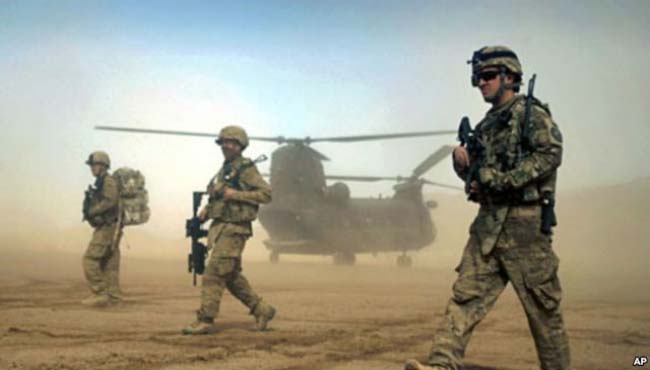Afghanistan faces a long and challenging road to peace, stability and development. But after thousands of lives lost and billions of dollars invested, it is imperative that we do not give up now. We must renew our commitment to supporting the people of Afghanistan on their difficult road to recovery,” these words are spoken by the UN’s humanitarian affairs operational director John Ging. He further believes that Afghanistan “has a lot of overlapping humanitarian challenges” and as so far this year, about 130,000 people have been displaced in the country due to the ongoing conflict. Despite urgent humanitarian assistance needed, Ging said the funding for action is currently standing at $204 million USD, which is less than 50 percent of what is needed. He warned the continuous deterioration of the humanitarian situation will likely jeopardize international community’s investment of billions of dollars already made in Afghanistan.
In the meantime, U.S. President Barack Obama announced that the current level of 9,800 troops would stay in Afghanistan through much of 2016, and that a force of 5,500 would remain thereafter – ending his campaign to bring home almost all troops stationed in the country. Calling the plan “the right thing to do”, Obama acknowledged “Afghan forces are still not as strong as they need to be”. Addressing battle-weary troops who may now be forced to return for another tour of duty, Obama said they could “make a real difference” to stabilizing a strategic partner. The decision to change strategy came after a months-long review that was punctuated by the Taliban moving into Kunduz last month and quickly taking over the city.
Following the speech of the US president, the Afghan government, which had earlier insisted on the longer stay of the invading troops, welcomed Obama’s announcement.
But on the other hand, The Taliban responded to the US announcement saying they would keep fighting until American troops finally pull out. “They were the ones who decided to invade Afghanistan. But it will be us who decide when they leave,” said Taliban spokesman Zabihullah Mujahid.
Moreover, Russian President Vladimir Putin warned violence in Afghanistan could spill over into ex-Soviet Central Asia, a day after Obama’s announcement to keep troops in the conflict-wracked country. Reports say that at a meeting in Kazakhstan, Putin and the leaders of ex-Soviet states agreed to create a joint task force to defend the region’s borders in the event of a crisis. The deal could pave the way for the deployment of Russian and other troops along unstable Tajikistan’s 1300-kilometre frontier with Afghanistan.
“The situation there is genuinely close to critical. Terrorists of different stripes are gaining more influence and do not hide their plans for further expansion,” Putin is quoted as saying.
Tajikistan’s porous border with the conflict-torn country is of particular concern given the surge in fighting between the Afghan government and the Taliban. Instability in Afghanistan’s north, highlighted by the Taliban’s brief capture of the strategic city of Kunduz last month, has spurred talk that Russian troops could step in to secure the border.
The “war on terror” and Afghanistan’s counterterrorism strategy were proved abortive within the past fourteen years. Despite the sacrifices made by foreign troops and Afghan soldiers and millions of dollars invested to stabilize the country, the unmitigated insurgency has resurfaced and Afghan people suffer as ever before. Taliban’s heavy inroads in central provinces, including Kabul, demonstrate their reorganization. Apparently, Mullah Akhtar Mansour, Omar’s successor, is backed to engineer and spearhead terrorist attacks in Afghanistan. As a result, rumors said earlier that Mansour travelled to Ghazni province for a week to lead a strong attack – which was soon suppressed by Afghan soldiers.
It seems that the scenario of Iraq is repeating in Afghanistan. Following the withdrawal of U.S. troops from Iraq, violence and bloodshed increased and civilians, including women and children, were changed into sacrificial lamb. After all, a new fundamental group namely the Islamic State in Iraq and Levant (ISIL) was formed in a sudden and mysterious way – which has changed Iraq into a battle ground. Finally, scores of U.S. forces returned to combat militancy but there is a little hope for a successful mission.
The Bilateral Security Agreement (BSA) was a great hope for a better Afghanistan. Afghan nation, including their representatives who attended Loya Jirga to decide about signing the security pact, urged the government to sign it with no delay. People believed that this would prevent from the repetition of Iraq’s scenario in the country. However, it failed to fulfill the public expectation. The U.S. decreased the number of its troops and the security is critical. Besides the Taliban’s heavy attacks, the self-styled Islamic Stage group has gained a foothold in Afghanistan too. Therefore, the U.S. announced to keep only few numbers of its forces in the country.
Compared to a large number of foreign forces who fought in Afghanistan, it is believed that the new announcement is unlikely to put a successful effect on security situation – this is what the Iraq situation reveals. Moreover, since this announcement has prompted the Taliban to react stronger, the violence and insurgency will continue unabated.
However, keeping a number of U.S. troops would be effective if they take active role in combating terrorism and intensifying airstrikes against Taliban and Islamic State group rather than playing only the role of trainers or advisers. So, to stabilize the country, foreign troops have to fight alongside the Afghan soldiers.

